Saturday (High 76, Low 60): Partly to mostly cloudy. Scattered showers and thunderstorms are possible.
Sunday (High 75, Low 61): Numerous rounds of showers and thunderstorms are possible throughout the day and night. Some of the storms late at night may be severe.
Monday (High 72, Low 63): Severe thunderstorms are still possible in the morning. Scattered rain showers will gradually taper off throughout the day.
Tuesday (High 73, Low 41): Sunny.
Wednesday (High 80, Low 55): Partly cloudy with a 30% chance of thunderstorms.
Thursday (High 81, Low 62): Partly to mostly cloudy with a 40% chance of thunderstorms.
Friday (High 79, Low 64): Partly to mostly cloudy with a 30% chance of thunderstorms.
Sábado (Máxima 76, Mínima 60): Parcialmente a mayormente nublado. Posibles lluvias dispersas y tormentas eléctricas.
Domingo (Máxima 75, Mínima 61): Numerosas lluvias y tormentas eléctricas son posibles durante el día y la noche. Algunas tormentas nocturnas podrían ser severas.
Lunes (Máxima 72, Mínima 63): Todavía es posible que haya tormentas eléctricas severas por la mañana. Las lluvias dispersas disminuirán gradualmente a lo largo del día.
Martes (Máxima 73, Mínima 41): Soleado.
Miércoles (Máxima 80, Mínima 55): Parcialmente nublado con un 30% de probabilidad de tormentas eléctricas.
Jueves (Máxima 81, Mínima 62): Parcialmente a mayormente nublado con un 40% de probabilidad de tormentas eléctricas.
Viernes (Máxima 79, Mínima 64): Parcialmente nublado a mayormente nublado con un 30% de probabilidad de tormentas eléctricas.
At 5:27 PM CDT latest observations (from 5:15 PM CDT) show fair skies in Cullman, which is close enough to what I see looking out the window, though I'd call it "mostly sunny", so we'll go with that. To my sometimes jaded and rusty eye, the clouds I see look like a combination of cirrocumulus, stratus/maybe nimbus, and mammatus clouds. It is technically 78.8 degrees, but let's go around and round that right on up to 79. The dewpoint is 42.8 degrees, but let's go ahead and round that on up to 43. That's be great . . . mmmmkay . . . . THANKS . . . they said that in a movie somewhere once upon a time. Anyway, that makes the relative humidity 28%. Winds are out of the South at 9 miles per hour with higher gusts up to 17 mph. The barometric pressure is 30.12 inches and holding steady for now, but was falling slowly earlier through most of the day. Visibility is a perfect 10 miles.
Our High today was 81, and the Low was 57.
Nitpicking version: The High today was 80.6, and the Low was 57.2. For legal and sanitary purposes, I should make it clear that even when nitpicking, I am in no way advocating for the reckless spread of head lice. Because as an especially dry principal I had in school once put it, "You know . . . that's where we get the phrase . . . NITPICKIN'!"
We've got some showers and thunderstorms moving through mainly the Ark-LA-Tex region this evening. They are associated with a fairly pronounced upper-level trough that you can (it's the dip in the lines) on the second graphic from bottom above. Which I think is the same as third from the top. Ah well, leave me a comment if you can't find it. I won't make fun of you when I wasn't even sure what kind of clouds I was seeing out the window earlier. And that "earlier" was just a few minutes ago. But time is relative, right?
Some people might think the joking mood I'm in this evening takes away from the good hard science of a blog like this, but I dunno. Because Albert Einstein once summarized his theory of relativity along the lines of: "You can hold your hand on a hold stove for ten seconds, and it feels like a full minute. You spend a full hour with a pretty gal, and it feels like it's over in a minute. That's relativity."
Even if he only told a secretary to tell that to the papers, I like the style.
Upper-air soundings from Birmingham and Nashville this morning showed cool, stable air.
There is a Tornado Watch for our neighbors in Western Louisiana back into Eastern Texas. And the only Tornado Warnings are for counties upstream in Southwestern Arkansas. That's for Hempstead and Howard counties, looks like the rotation is about gone on radar now, so that will probably be allowed to expire on time, in the next five minutes. Then they've got a Flash Flood Warning for Sabine Parish in Louisiana and Southeastern Sabine County in Texas. That is indicated by radar.
We have a cold front coming at us this weekend into early next week with yet another threat for severe thunderstorms around here. As you can see, the severe weather threat will affect several states across a decent chunk of the country, through the Mid-South, Midwest, Ohio Valley, Mississippi Valley, and Tennessee Valley. So let's dig into those details.
The GFS is showing a decent amount of moisture spreading in here tomorrow, continuing the trend of today but with some actual rain possible.
Interesting to see the NAM wanting to hold off most of the rain until later in the evening instead of moving it in here by early afternoon like the GFS. I'd bet on the NAM in this scenario. It's good at this time range, and this system has been gradual so far. But we'll forecast scattered showers and thunderstorms for tomorrow.
By the way, we're not expecting severe thunderstorms around here tonight or tomorrow, at all. The Midwest may have some such issues tomorrow. But for us, it holds off until Sunday, most likely Sunday night, late.
But during the day tomorrow, the chance of rain is about 40%, look for a High temperature of about 75-76, a Low near 60, maybe 59.
Then during the day Sunday, it's an interesting look as we get closer to this event. The GFS is showing a good chance for rain during the day, to the point I'd think about raising the rain chance to about 50% during the day. And it's just going to be an interesting setup. The atmosphere may be capped, as forecast soundings have been showing for the past few days. Any storms during the day would be unlikely to reach severe limits, unless some of the hail became severe (the size of a quarter). And this could affect our airmass going into Sunday night. So let's look at the other models and get a feel for how likely this daytime convection is.
The NAM actually supports this scenario pretty well.
And so does the ECMWF. So I'm going to adjust the forecast a little bit. Numerous showers and thunderstorms are possible off and on during the day Sunday as well. And instead of a High near 80 like some previous forecasts were showing, going to forecast a High in the mid-70's, about 75, and a Low of about 60 or so. So we may not get those really high instability values like we were seeing on the models days ago after all. We do still have a severe weather threat for the night hours. It's only a matter of nailing down the details.
For any other forecasters who find this setup a challenging one, might I suggest Pink Floyd and chocolate for inspiration . . . any form of chocolate will probably do.
Here's the energy helicity index between 7 PM Sunday, 1 AM Monday, and 7 AM Monday. This is the most likely time window for us to see that combination of unstable air and wind shear that we need for severe thunderstorms. Plus our lifting mechanism may come late at night ahead of the cold front boundary.
The forecast sounding for near Cullman shows moderately unstable air with CAPE values of about 1,000 j/kg and Lifted Indices of about -5. Combined with good speed and directional wind shear. Got those long, curved hodographs too. Helicity even at the lowest kilometer of about 200-300 m2/s2. Supercell composite of about 10, significant tornado parameter in the 1-3 range. So this setup would support tornadoes in the region as well as large hail and damaging winds. One thing you might notice on the temperature/dewpoint/air parcel lines in the main graphic of the forecast sounding is that the rising air has a hard time overcoming that "cap", that inversion layer of warm air at about 700-850 millibars. It does look like the air will overcome it at some point overnight/in the morning. If that happens right around the time the squall line arrives, then that makes sense. If it happens sooner than that, would have more of a concern for a few isolated supercells forming ahead of the line, which would enhance the large hail/tornado threat from what it would be with the squall line alone.
And I'm not sure it'll be a squall line. It's still a toss-up as to whether the earlier supercell thunderstorms from out West will form into a squall line or more into a storm cluster called a mesoscale convective system. We get a lot of those in the summer sometimes, those days we have strong storms that sustain all the way from Missouri through Tennessee and Alabama, that's what an MCS is.
But we do need to watch in case even one or two supercell thunderstorms try to form during the dark hours ahead of the main cluster of line of storms just ahead of the cold front.
So let's look at the SREF. One time I heard a SKYWARN instructor say it was outdated and just an ensemble based mostly on the NAM, but hey, I've had good results with it over a long period of time. I even found it helpful in some winter weather events. So I'm going to look at it. Even if people think it's outdated.
At 1 AM it is showing dewpoints in the 60-65 range combined with bulk shear between 0-6 kilometers of about 30-40 knots, which is sufficient instability and wind shear to support severe thunderstorms.
It is showing CAPE values at or just about 1,000 joules. That's "convective available potential energy". And that's moderate. It's certainly enough to work with, just not really high instability. Notice the values are a little higher over Northwest Alabama. And then the storm relative helicity value (basically the amount of "spin" in the atmosphere) up to 3 km in the air is about 200 m^2/s^2. Again that's not an overwhelming value, but it is sufficient to support severe thunderstorms, including those that can produce tornadoes.
Lifted Index is about -3 to -5, which again is moderately unstable air. If you notice this value on the daily soundings like today, the value is positive. The Lifted Index at Nashville 7 AM this morning was 12 at the surface. Because air is supposed to get cooler as you go up. If you subtract the air at 500 millibars/about 18,000 feet and the air at the surface and get a negative number, that means there is warm, rising air, i.e. instability.
And even at the lowest kilometer, we have helicity values of about 100-150, which is just enough to support a threat for tornadoes in addition to large hail and damaging winds in thunderstorms.
So after all this hew-hawing around, here's the official outlook from the Storm Prediction Center. The hatched 30% zone is where supercell thunderstorms are more likely to form, mainly Northwest Alabama and Southern Middle Tennessee, stretching back into Arkansas all the way up into the OH Valley. The rest of us are under a basic 15% risk for severe thunderstorms.
The timing is a little questionable. Some of it could last beyond 7 AM Monday morning, but I'd be surprised if it lasted longer than until 9-10 AM even for far Northeast Alabama, like around Fort Payne.
Monday looks like a day where the rain may linger throughout the day, off and on, but the major storm threat should wind down in the early morning hours, daybreak or not long after. High should be near 70 or so, Low of about 60 again. Will forecast a 50% chance of rain. Clearing should be gradual throughout the day. We may be dry as a bone by evening, but it doesn't look like the rain clears out in a hurry with this one, more gradual through the day. Just not expecting severe weather after the morning round moves through. It'll stay breezy at times.
Behind that, skies look clear on Tuesday with a High in the lower 70's, Low in the lower 40's.
Then on Wednesday we get another trailing cold front bringing back some rain and thunderstorm chances.
As is often the case, the European model has a slower timing than the American one.
Either way, we will have to monitor Wednesday/Wednesday night again for a threat of severe thunderstorms, at least for Northwest Alabama into Tennessee counties. And this is another storm system that may affect many states with the severe weather potential.
Looking for a High near 80 and a Low in the mid-50's. So if we could get any storms, we'd certainly have the unstable air.
The GFS is showing a good combination of instability and wind shear over much of the region at 4 PM Wednesday. And you can't get too hung up on the guidance this far out, with two events back to back. But this looks worth respecting for sure. Especially looks like a rough atmosphere over Central and Northern Mississippi. A forecast sounding near Jasper is showing moderate instability and strong wind shear/low-level helicity, an uncapped atmosphere that would support severe thunderstorms capable of large hail, damaging winds, and tornadoes.
So we've got a double threat coming up. It wouldn't be the first time.
Thursday the GFS doesn't show that frontal boundary making any progress, more of an unsettled pattern.
Similar look from the ECMWF, but it really doesn't show so much thunderstorm chances until late Wednesday night anyway.
And again late Thursday afternoon (4 PM) the GFS is showing an unstable, sheared airmass over the region.
And at this point I'm not sure how sold I am on it. Rain chances between the two days look about 30-50%. The timing of the showers/storms is highly uncertain, especially with another storm system between now and then. (The models have to guess at the state of the atmosphere behind this one to predict the next one. When the first storm system is out of the way, the models can initialize with the real data of how the atmosphere is behind the first system. It's more accurate.) And this looks more like an unsettled setup with some severe weather potential more than it looks likely to be a super-organized event around here. Looks like a High near 80 or so, Low in the lower 60's.
And Friday doesn't look like much change, still unsettled pattern of scattered showers and thunderstorms, warm temperatures, High near 80, Low in the lower 60's. And we'll have to monitor for severe thunderstorms, even if the potential stays on the lower end.
So let's focus on the more obviously organized severe weather threat late Sunday night into Monday morning. We are likely to see some severe thunderstorms in the region that are capable of large hail, damaging winds, and tornadoes. Most of the storms will likely be in the form of a squall line or a storm cluster called an MCS. But in any discrete supercell thunderstorms that can make it into our region, apart from the line (or cluster), there is more of a threat for hail up to the size of golfballs and more a chance for tornado damage.

The main thing to focus on is that this event is coming overnight. Everybody needs at minimum to have a cell phone set on Wireless Emergency Alerts to wake you up if need be. Ideally you have a NOAA Weather Radio with battery backup, set to the proper channel that warns for your county (and often surrounding counties, where the storms can come from - like the Cullman transmitter also alerts for Walker and Winston Counties unless you program them out . . . can't remember for sure if Blount County is included or not). If you don't have a weather radio, you could still fall asleep with the regular radio tuned to a channel that will cut in and report on the storms if need be. I've done that before. Believe it or not, I lived in a house one time where the window in my bedroom was kinda' funky, the way it was set up. And the wind actually blew the bottom part of that window inward so that it lopped off the antenna on my weather radio. So when I was low on money, before I got another one, I just tuned to a good radio station on nights when bad weather was coming in. If you want to be pretty sure of waking up, the classical NPR stations, 90.3 Birmingham or 89.3 Huntsville, may be the best bet there. They play all that soft classical music and then cut in with that emergency alert tone, which is almost impossible to sleep through, but especially if you're snoozing to soft classical music and then hear that thing interrupt it. I know that Live 95.5 FM Cullman also cuts in for severe weather though. And you might like the music better. I usually listen to 101.5 FM WJLX out of Jasper on Sunday nights because that's when Coyote J. Calhoun's show is on. They only play songs from before the year 2000 on there, but his show is great, about as good as Alice Cooper's radio show. And they do pay some attention to severe weather there, maybe not quite as much as the Cullman station. The owner of Live 95 has a lot of friends in the National Weather Service, so he really stays on top of it.
If anybody needs a quick review of severe weather safety, basically you need to get into a sturdy house or other strong building during a Tornado Warning, don't stay in a mobile home. And try to get as low down as you can and as near the center as you can. Try for a smaller room or hallway, and cover your body in some way, especially protect your head in case of any falling or flying debris. Folks with basements, please still consider the chance that if your home sustained severe damage, debris could fall from above. It's rare for people to get hurt like that, but it can happen. And anywhere you are, if you have something like a workbench, a table, a desk, or a set of stairs that's in the general area you're sheltering in, please use that. Because it's better to add an extra layer of safety than to underestimate the storm threat and end up getting hurt.
The risk for flash flooding issues with this event Sunday night/Monday morning is very low.
We could still see about 3-4 inches of total rainfall over the next seven days. So by the end of the period, at least a few isolated spots in the region will probably need to watch for that, at least flooding of the rivers and streams that typically reach flood stage.
Got a
SKYWARN class coming up April 10th in Hartselle.
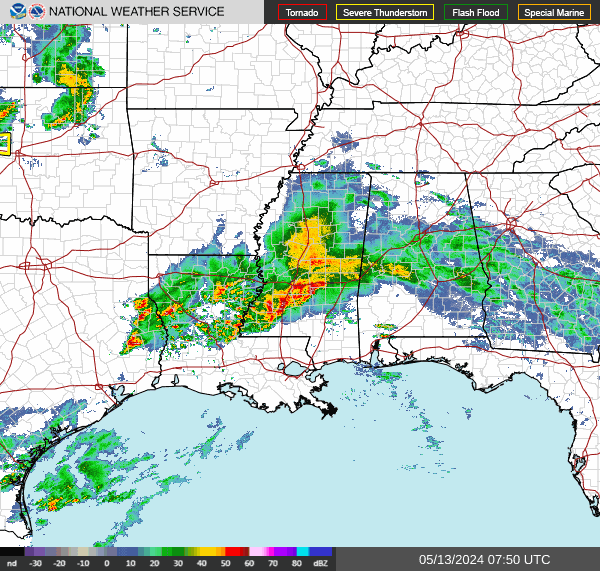
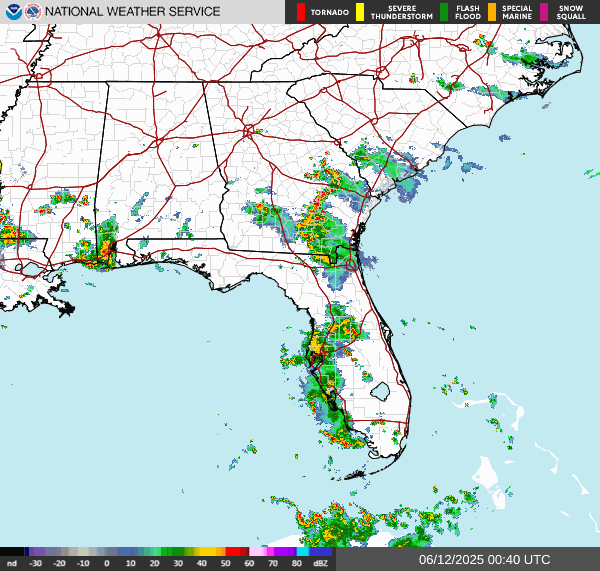




















.png)















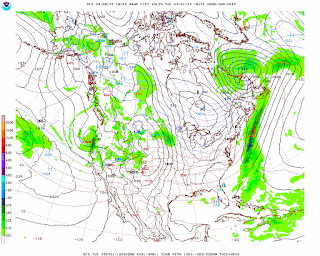



















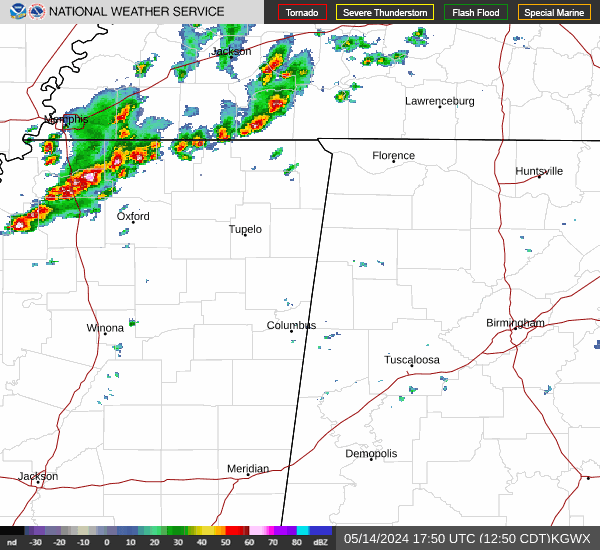
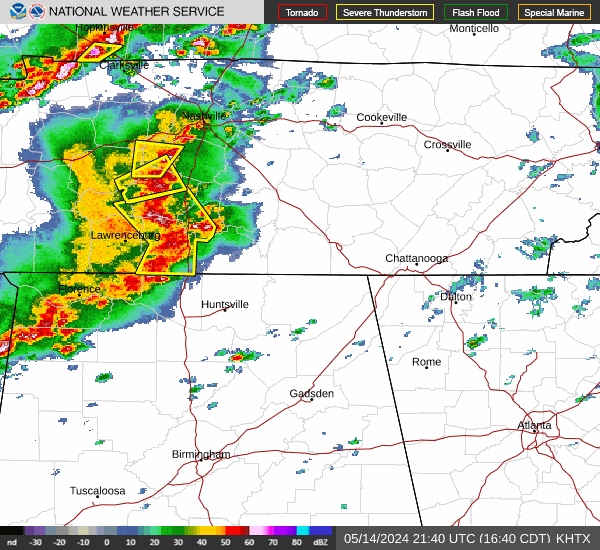




No comments:
Post a Comment